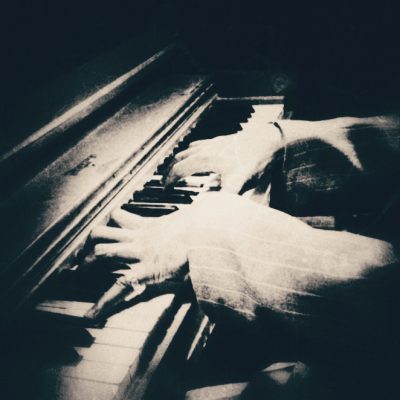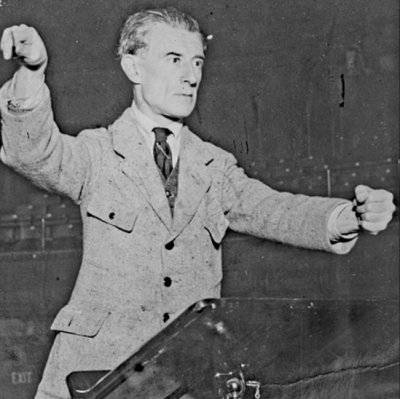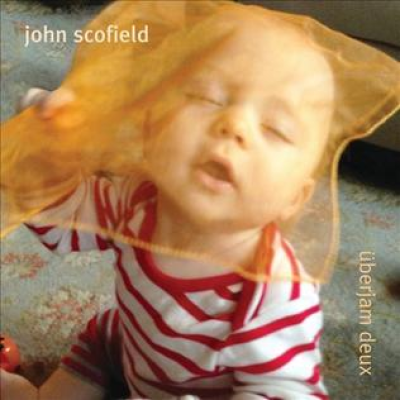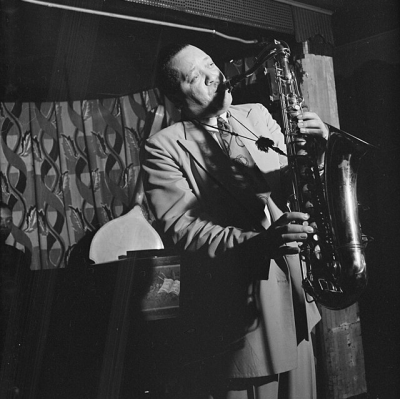“I just wish I could pitch for one year!”, former Major League pitcher Larry Jansen says when asked about today’s salaries. But you get the sense he wouldn’t trade today’s money for a single memory of his life long career in baseball. Jansen was a 1950 All-Star pitcher (he induced Joe Dimaggio to hit a fly ball), a two time 20 game winner, and the winning pitcher in perhaps the greatest baseball game ever played, Game 3 of the 1951 playoff between the New York Giants and Brooklyn Dodgers.
A lifetime resident of Oregon, Jansen took time to reflect on his days in New York with the Giants, his role in the classic pennant chase of 1951, and his experience as pitching coach with the San Francisco Giants.
His story is living history, and we are very proud to present a part of it in this exclusive Jerry Jazz Musician interview, conducted April 9, 1999.
Interview hosted by Jerry Jazz Musician publisher Joe Maita.
*
JJM: Did you begin your career with the New York Giants?
LJ: I was originally signed by the Boston Red Sox but they didn’t honor my contract, so Judge Landis mad me a free agent. I signed with the Salt Lake City Bees after that and then wound up with the San Francisco Seals.
JJM: So you played at Seals Stadium?
LJ: Yes. I played there in 1941, 1942, and part of 1945 and 1946.
JJM: Who was the most notable teammate at the time?
LJ: Ferris Fain, who was later in the major leagues, Cliff Melton, Bob Joyce…quite a few people.
JJM: How did if feel going from rural Oregon to suddenly find yourself in New York City?
LJ:. When I was in the Pacific Coast League, there was actually very little coverage of Major League baseball. The paper would have standings, but rarely any big write-ups.
JJM: When you went to New York, did you find success pretty quickly?
LJ: No, because I got hit in the face during spring training so I missed much of it. I didn’t get a chance to pitch until 4 days before cutting down time. I got my first start and beat the Boston Braves 2-1. This was in 1947. I was 27 years old at the time.
JJM: What was your best pitch?
LJ: Control was my outstanding thing, but my best pitch was my slider.
JJM: How did you learn how to throw that pitch?
LJ: I learned it from a catcher I was with during my days with the SF Seals named Larry Woodall. It’s a pitch that’s getting more popular all the time.
JJM: 1951 was such a famous year in American sports. On August 11, 1951, the Giants were 13 1/2 games behind the Dodgers. What happened? How did you guys pull that off?
LJ: The biggest thing is that the Dodgers had to lose in order for us to catch up. In our 16 game winning streak, for instance, they still had to lose some games. I they played one or two games below .500 in that stretch.
JJM: And the Giants were 37 – 7.
LJ: That’s right.
JJM: The clubhouse must have been a pretty exciting place come September when you were shaving the Dodger lead. The city of New York must have been pretty excited as well.
LJ: I don’t think many people got excited about it except for the last 10 days because it seemed impossible for us to catch up.
JJM: How did you pitch during that stretch?
LJ: I won three or four games, two games during that stretch of 16 wins in a row.
JJM: What role did you have during the playoff?
LJ: I pitched the last game of the season and went nine innings, beating Boston 3-2 to cinch a tie with the Dodgers. I wasn’t going to start any of the games during the playoffs because I didn’t have enough rest and because I never did pitch too well against Brooklyn. Before the second game of the playoffs, our manager, Leo Durocher, called Maglie and me into his dressing room, which never ever happened, and he wanted to know how we felt about pitching with two days rest. He asked our opinion about whether either of us should pitch game two on limited rest, or pitch someone else and be rested for game three. Sal and I said we would feel better pitching with another days rest. So, Leo said, “Sal, you are starting game three, and Larry, you will be the first guy out of the bullpen, regardless what happens.”
JJM: Did that happen?
LJ: Yes. Sheldon Jones pitched the second game of the playoff and the Dodgers beat us 10-0. The next day Sal pitched eight innings and I pitched one.
JJM: So, that one inning you pitched…what sticks out in your memory?
LJ: Well, we were behind 4-1 at the time, so I just did my best to get three guys out. The Dodger players were hollering out at me from the dugout, “You can go home tomorrow,” that kind of stuff. They let me have it pretty good. As it turns out, I was the winning pitcher.
JJM: When you retired the Dodgers in the top of the 9th and went back to the bench, what was the feeling among the Giants at the time? Was there a sense of doom, or did you feel you could rally?
LJ: We knew we had a good part of our lineup coming up and we just hoped they could get hits. Itwas our hope that Newcomb would tire. Maglie tired after eight innings and in fact gave up his runs in the 8th, so we felt we could get to Newcomb as well. We had played well the whole game, but Bobby Thomson misplayed a ball he thought he should have caught in the 8th.
JJM: Where were you when Thomson hit the home run?
LJ: I was on the bench with the team.
JJM: Did any thoughts go through your mind toward Ralph Branca, the pitcher that gave up the home run? Did you sympathize with him at all after it was all over?
LJ: Oh, no! I never thought of them!
JJM: What about afterwards? Did you ever talk to Branca after?
LJ: Not very much. Bobby Thomson and he became great friends and they traveled around the eastern United States signing autographs at book signings.
JJM: So it became a financial windfall for Branca?
LJ: Oh, yes.
JJM: 1951 was also the year Mantle and Mays came up. Did the league sense that they were special players? Were they the talk of the league?
LJ: I don’t recall. I know that they both did a lot of things right during that season!
JJM: Did you face Mantle in the ’51 Series before he got hurt?
LJ: Yes. He got hit in the game I pitched. I have the distinction of being the pitcher to give Mantle his first World Series hit, a drag bunt. He was leading off for the Yankees at the time, during his rookie season. Our scouting reports indicated nothing to us about him being a drag bunter, but he knew I was a breaking ball pitcher, and on the first pitch, he bunted it, and the way he could run, we didn’t have a chance to throw him out.
JJM: You must have faced Dimaggio in that series as well. Was that the only time you ever pitched against him?
LJ: No. I pitched against him in the 1950 All Star game too, and he hit a fly ball off me then.
JJM: You ever in awe of Dimaggio when you faced him?
LJ: Oh, no. I knew he was a great ball player. I also have the distinction of being the last man ever to pitch to Dimaggio. It was also during the 1951 Series. I held him to a double, and I thought I did a pretty good job!
JJM: Who was the toughest hitter you ever faced?
LJ: I had lots of them because I didn’t strike many people out. I would have to say Stan Musial, Ralph Kiner, Duke Snider. Those type of fellows.
JJM: You said you had trouble with the Dodgers?
LJ: Yes. That ballpark was just not good for me, and they hit some fly balls off me the park didn’t hold.
JJM: What is your fondest memory of Ebbets Field?
LJ: It was a terrible place to play! It was a very tough park to pitch in. Left field was 320 feet or so, and right field was 317, and center field about 385. It was a very small park.
JJM: The current era of baseball is trying to reach back into your era. It’s evident in the ballparks that are being built. It’s as if they are trying to bring the magic back through the parks that are being built. I think they are succeeding. Is there anything else we should be doing as a culture to bring the magic of baseball back?
LJ: Yes. The next thing they could do is for the club owners to understand the importance of developing young fans, so they need to make the prices right so their folks can afford to take them to a game. If the kids don’t have the opportunity to go to the game they’re not going to be very strong baseball fans. when they grow up. Mr. Wrigley, when he was owner of the Cubs, understood that. He used to have 40 busloads of kids in the upper grandstand, knowing they would spend a buck and learn to love the game of baseball. That’s why the Cubs had so many great fans even with a losing ball club. I think club owners today are missing out on them, charging the outrageous amounts they do for a family to come to a ballpark.
JJM: Was there a stadium that you had more success in than others?
LJ: Crosley Field in Cincinnati, but I don’t know why. I pitched really well against them, and also against Philadelphia and Boston. When Durocher discovered I had trouble against the Dodgers, he had me pitch against teams on either side of our series with them. I would pitch against Philly before our team played Brooklyn, and against Boston after playing Brooklyn.
JJM: Your career as a major league pitcher ended in 1954?
LJ: Yes. I pitched half a season in ’54 and then they made me a coach that season. After they wouldn’t sign me in 1955, I signed with Seattle of the Pacific Coast League, and I was traded to my home team, Portland, and played with them from ’58 – ’60. I went back to the Giants when they were in San Francisco in 1961 as a coach.
JJM: When you went into San Francisco in ’61 as a coach, that was right when Marichal was coming into his own. Was he the best pitcher you ever coached?
LJ: I had Jack Sandford, who was awfully good. He won 23 or 24 games one season.
JJM: Yes, he won 16 games in a row in ’62.
LJ: Marichal was the most consistent good pitcher though, yes.
JJM: Gaylord Perry thinks highly of you and credits you for much of his success.
LJ: I was helpful in keeping him in the big leagues, yes. Our organization didn’t think to much of him, and I knew he had a good arm and it was just a matter of him getting a chance.
JJM: Do you have any special memories of Candlestick?
LJ: It was a very cold place to be! We played a lot of night games and that wind would howl! We used to run out to right field before the game would start, and many times my pitchers would take their jackets off and instead of laying them on the ground they would just lean them against the fence because the wind would hold them right there.
JJM: That must have presented some special challenges as a coach, to keep your pitchers loose.
LJ: I asked all my pitchers to wear a choker around their necks and also to warm up an extra five minutes. I told them that I didn’t care how loose they were, and instructed them to warm up 17 minutes if they normally would warm up 12 minutes. One very cold night, Bob Gibson of the Cardinals came in and made me look like a monkey. In those days, they didn’t have to go to the bullpen to warm up, they could loosen up around home plate. Gibson came out and started warming up, and after about 20 pitches said to heck with it, and walked into the dugout. For the first six innings of the game, he went out there and dinked around with slow junk, and I’ll be a son-of-a-gun if he doesn’t end up the last three innings getting loose, and ends up beating us! Did my pitchers ever give me a “going-over!”
JJM: What do you remember about the Marichal/John Roseboro bat incident in 1965?
LJ: It was really overplayed, as far as I was concerned. Marichal still had the bat in his hands, and he could have hit Roseboro more, but didn’t. It may have looked like he was going to swing again at Roseboro, but he was just trying to protect himself. What I remember happening is that Roseboro, when returning the pitches back to Sandy Koufax, he would throw the ball right past Marichal’s ear. Juan turned around and asked Roseboro to stop doing that. Roseboro stood and took off his mask, and Marichal thought he was going to hit him with the mask, so he hit him with the bat. But he tapped him. If he’d have hit him, he would have knocked him cold.
JJM: When you see the kind of salaries these guys are making, it’s got to make you stop and think, no?
LJ: I just wish I could pitch for one year.!
_______________________________
*
If you enjoyed this interview, you may want to read our interview with Jackie Robinson biographer Scott Simon.










































